October 7th, 2025
This morning, on October 7th, 2025, I left Park City and drove southward toward the Price Canyon Recreation Area. The early sunlight cast a soft glow over the Wasatch Plateau, and as I descended into the valleys, the rugged beauty of Utah unfolded around me — layers of ochre, red, and gray stone rising in sharply cut ridges and walls. My first stop was near the Carsten Gate, at the monument commemorating the Garbon Power Plant.
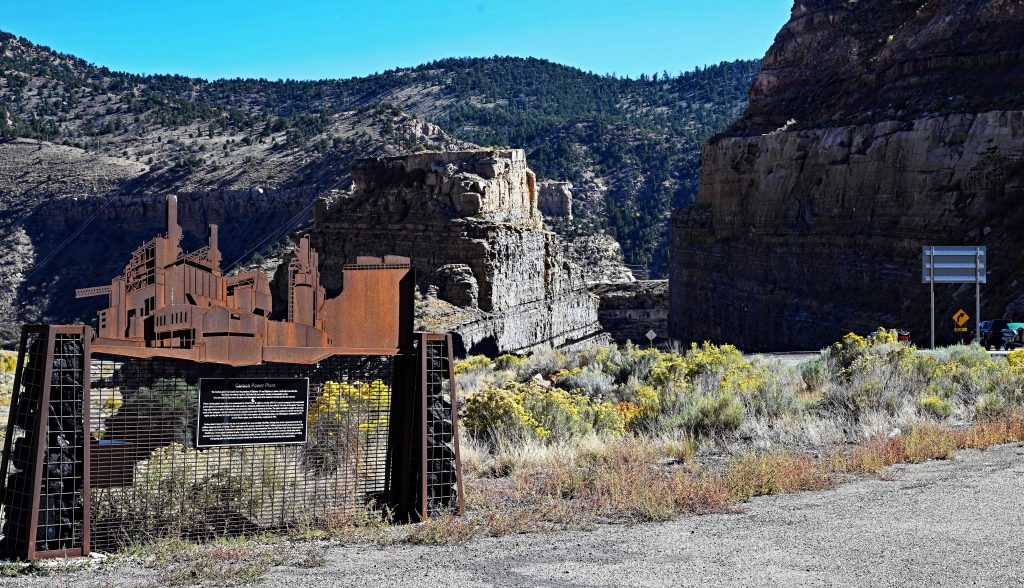
The panels there told the story of the once-vital facility that helped fuel the region’s growth, and while I read, the vast backdrop of mountains dominated my view — their colors shifting from rust-red to soft gold as the light changed, their slopes scarred yet graceful, carved by wind and time.
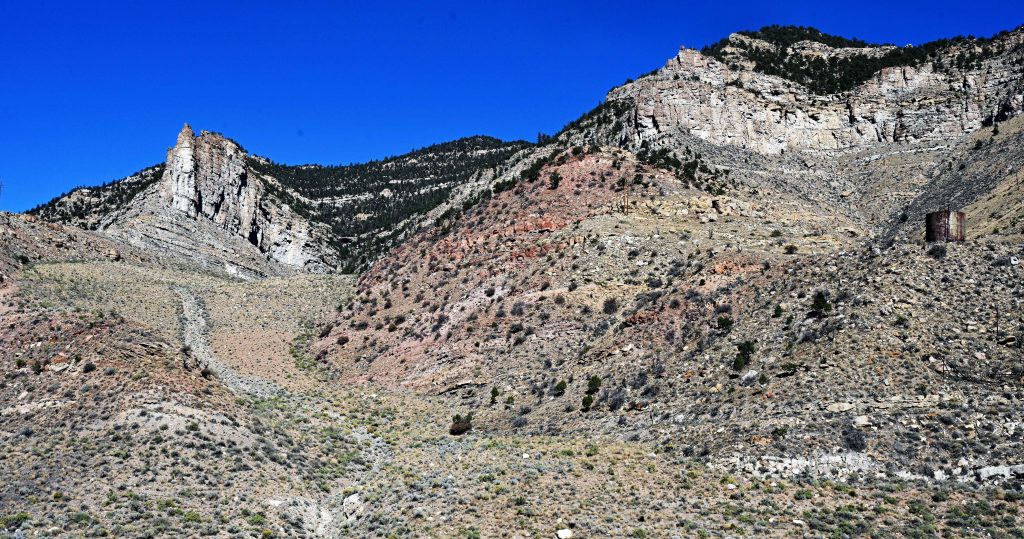
A short drive further brought me to Castle Gate, a place whose name captures its character perfectly. Two immense sandstone walls stand like sentinels on either side of the canyon’s mouth, their sheer faces glowing in the morning sun like the ramparts of a giant fortress.
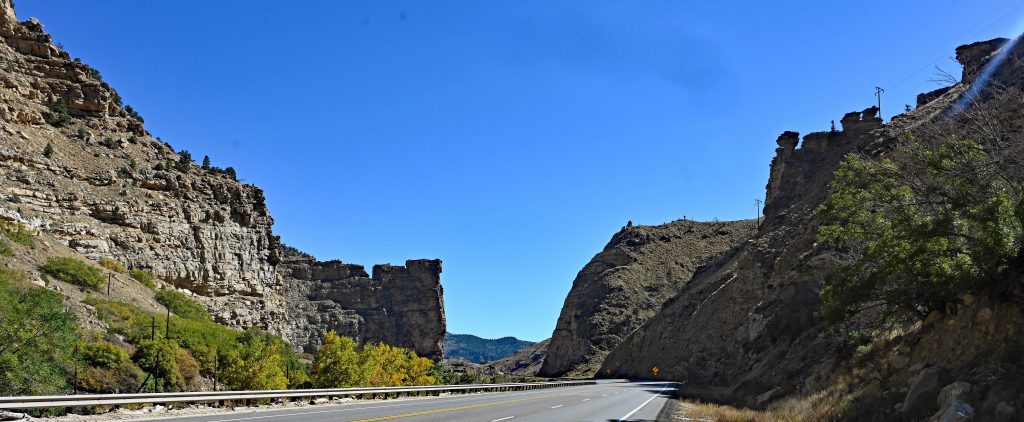
The rock formations are rugged yet majestic, their surfaces streaked with deep shadows and warm hues — reds, oranges, and pale yellows blending into each other as if painted by nature’s own hand. Standing there, I could easily imagine travelers of a century ago passing beneath this natural gateway and feeling the same awe.
Castle Gate’s history is inseparable from the coal that lies beneath its mountains. The first mine opened here in 1886, following the discovery of rich deposits that would soon transform the quiet canyon into a bustling community. Just two years later, in 1888, the Denver and Rio Grande Western Railroad laid its tracks across the Wasatch Plateau, right through the newborn town. For decades, Castle Gate thrived, its homes, miners, and trains forming the pulse of Utah’s coal country.
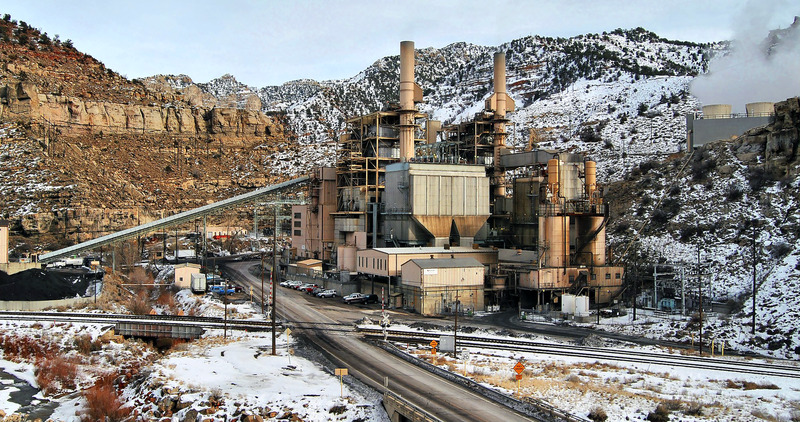
Hard to imagine, that the everything has vanished. The photo I have taken from: https://www.intermountainhistories.org/items/show/480
Today, however, the town itself has vanished. Only the empty ground and the towering rocks remain — silent witnesses to a time when the canyon echoed with the sounds of labor and life. I stood there for a while, taking pictures and letting the quiet vastness of the place sink in.
From there, I continued my journey to the Price Canyon Recreation Area. After about three miles, I turned left onto a narrow, winding road that climbed steadily upward, twisting through the pines and aspens toward the high ridges. The road felt like a hidden path into the heart of the mountains, each turn revealing new views of the canyon below — a landscape of deep folds and bright stone cliffs. When I finally reached the small parking area, another car parked just before me. A couple stepped out, and as we started talking, we discovered, to our surprise, that they were from Zofingen — just fifteen kilometers from my own small city back home. What a coincidence, to meet neighbors so far from home, here in the quiet wilds of Utah!
We decided to hike the Ford Ridge Trail together. Martin, the husband, stopped often to take photos of the burned trees — their blackened trunks stark against the bright sky — and of the sweeping views that opened on both sides of the ridge. His wife, Yvonne, couldn’t manage the steeper sections because of a health condition, so after a while they turned back, and I continued alone into the high silence of the mountains.
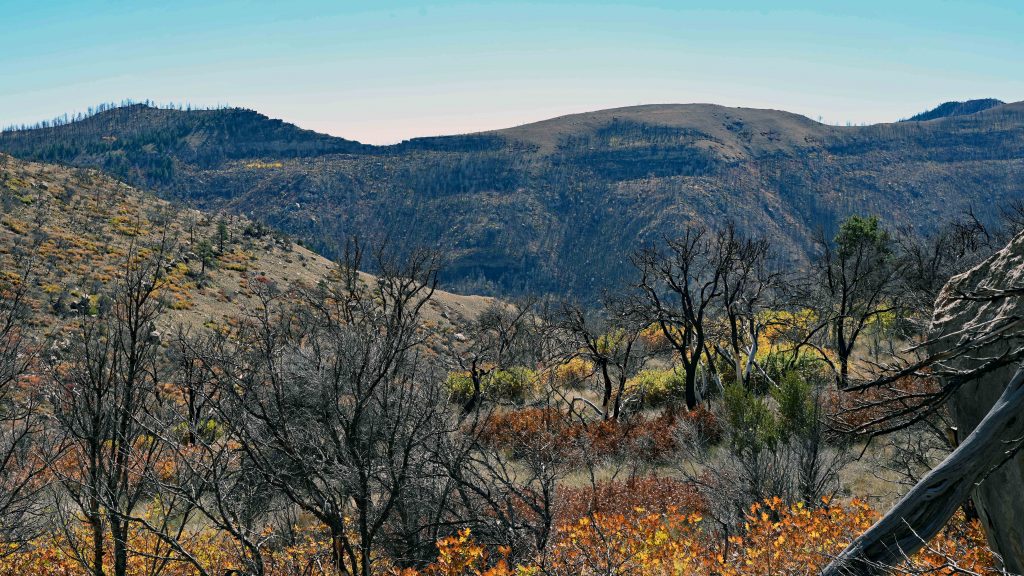
The trail climbed gently along the ridge, offering magnificent vistas both east and west. The air was cool and dry, scented with pine, and the sky stretched endlessly above. Every turn revealed another angle of the canyon below — steep slopes scattered with juniper and sage, and far-off peaks catching the afternoon sun.

After about an hour, I decided I would continue only to the next turn of the trail, perhaps 800 meters farther, before heading back. But just as I thought this, I heard a rustling sound ahead.
Through the trees on my right, I saw four cows resting in the shade. It was a calm scene, but I stayed cautious and walked on quietly. A few minutes later, another small herd appeared — perhaps ten or more, standing up as I approached, their large, dark eyes following me closely. For a moment I felt a flicker of unease — they weren’t bison, of course, but still, their size and number made me careful. I passed slowly and kept a respectful distance, reminding myself that in these open lands, the trail belongs to them as much as to us.
When I reached my planned turning point, I stopped and took a few more photographs. The afternoon light had softened,

wrapping the mountains in a warm, golden haze. On my way back, the cows had vanished, leaving only silence and the faint rustle of wind through the grass. The descent offered new perspectives — the same peaks now seen from a gentler angle, the same valley glowing in softer light.
Back at the parking area, I felt pleasantly tired and deeply content. The hike had been peaceful, filled with beauty and small surprises — from meeting people from my own region to encountering the quiet presence of the grazing cattle. As the sun began to dip, I drove down into the town of Price, where I found a comfortable hotel for just sixty-one dollars — a small but welcome luxury after a day so rich in experience.
It had been a day of contrasts: vanished towns and living mountains, faraway connections and moments of solitude. The colors of the canyon — reds, browns, and golds — stayed with me as I settled in for the evening, a vivid reminder of Utah’s rugged and timeless landscapes.